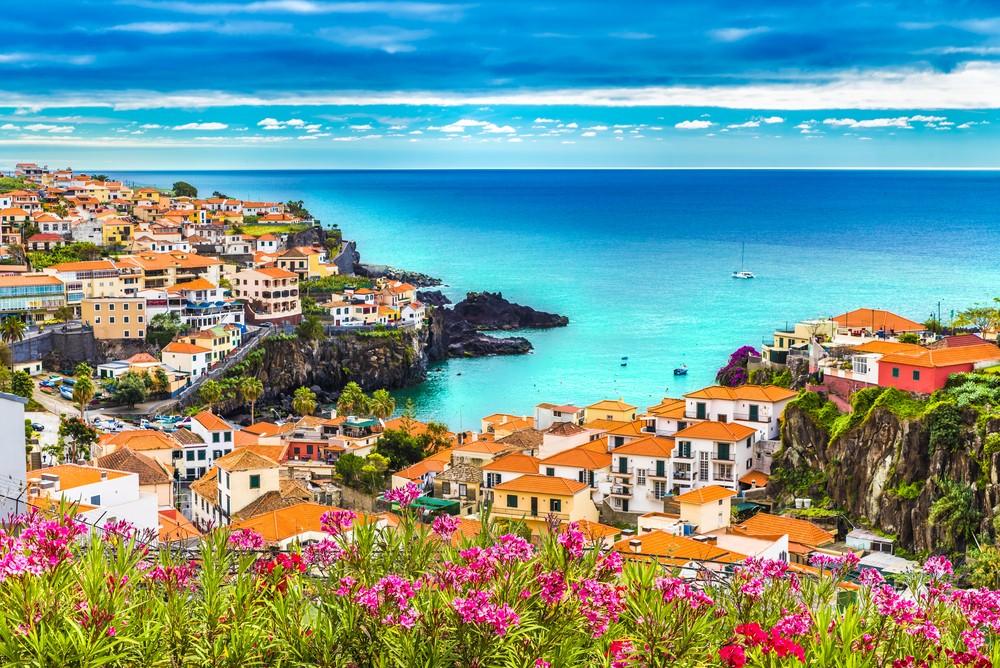Madeira is a true pearl that captivates with a mild climate and plenty of sunshine all year round. The island in the Atlantic Ocean belongs to Portugal, and thus to the EU. However, geographically speaking, the island is closer to Morocco. 737 kilometres separate the European island from the African mainland. In addition to a varied and exciting flora and fauna, Madeira can also boast historic towns and villages with original charm that invite you to visit and relax.
The island’s capital, Funchal
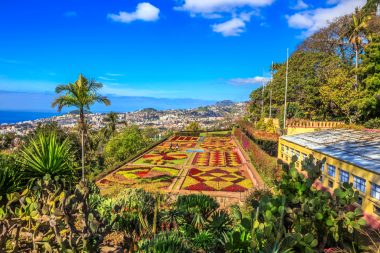
If you come to the island of Madeira , you usually end up in Funchal – whether by plane or cruise ship. With around 115,000 inhabitants, Funchal to the south is by far the largest city on the island, and the tourist magnet par excellence. Funchal’s old town is picturesquely located directly on the coast. In the narrow streets of the old town, it is wonderful to walk past small traditional shops and quaint restaurants and bars. If you want to experience the real life of the islanders, you should definitely visit the Mercado dos Lavradores. Here, locals and tourists alike stock up on fresh fruits, such as passion fruit, mangoes, guavas and bananas grown in Madeira, which are very popular here. Flower bulbs can also be purchased here.
Madeira is considered the flower island of Europe par excellence – anyone who has ever visited the Botanical Garden of Funchal will know why. The best way to get there from the city centre is by cable car. Already on the way, a breathtaking view stretches over the city. In addition, there are a whole series of churches worth seeing, such as the Sé Cathedral. Palaces that were built in colonial style often contain museums and can be visited inside and outside. For example, you can see everyday objects, antique furniture, paintings and azulejo, the typical Portuguese tiles. Football fans head for the Cristiano Ronaldo Museum, where there are numerous memorabilia of the footballer such as trophies, jerseys and fan letters to see. The ball artist is the most famous son of the island.
The Piscina Naturais of Porto Moniz
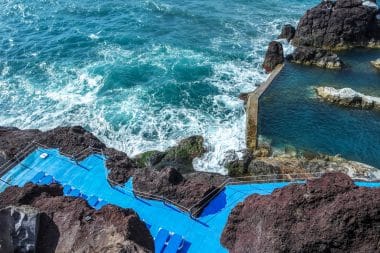
Much smaller than Funchal is the coastal town of Porto Moniz. In the somewhat sleepy small town, at the very northwestern tip of the island, only about 1,700 inhabitants live. Nevertheless, the place, which was home to whalers in earlier times, is absolutely worth seeing. Directly in front of the waterfront promenade are several Piscina Naturais, natural swimming pools that have formed from volcanic rock. Here you can relax in the warmed Atlantic water and listen to the sound of the sea. In addition to tourism, fishing is now the main occupation of the inhabitants of Porto Moniz. Therefore, you should definitely try freshly caught swordfish with Madeira bananas and passion fruit sauce in one of the fish restaurants located directly on the harbour. Afterwards, you can track down the sea creatures in the Centro Ciência Viva, a show aquarium.
The thatched farmhouses of Santana

Santana is located on the north coast of Madeira and is widely known for its small thatched houses, which from the outside look like brick, brightly painted Indian teepees. Their peculiar architectural form made the houses one of the landmarks of the island. The thatched roofs have to be renewed about every four to five years: if you are lucky, you will come at the right time to witness this ancient task. In the past, the farmers of the village lived in the traditional houses, but today many of them are no longer inhabited, but can be visited. The houses are part of the Madeira Theme Park, which provides information about the history and culture of the entire island. Santana is also surrounded by a densely wooded mountain landscape, which has held the title of UNESCO Biosphere Reserve since 2011. If you are already here, you should take a hike into the enchanting surroundings.
The romantic fishing village of Camara de Lobos
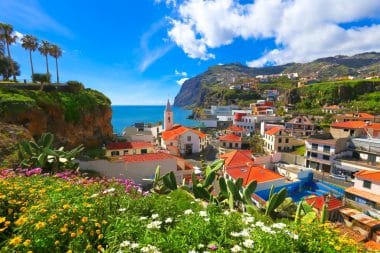
Just a few kilometres from Funchal is Camara de Lobos. The place is considered one of the most original in all of Madeira. If you are good on foot, Camara de Lobos can be approached from Funchal via a coastal hiking trail that offers magnificent views of the Atlantic Ocean. Even from afar you can see a whole row of wooden fishing boats, which are still in service here. The place itself was built on stone cliffs. So on a walk through the small town, it goes up and down a lot. Above the fishing village lies the most important growing area of Madeira wine. In the small bars of the old town, you can enjoy a glass of it in a romantic setting.
Machico: a visit to the oldest city in Madeira
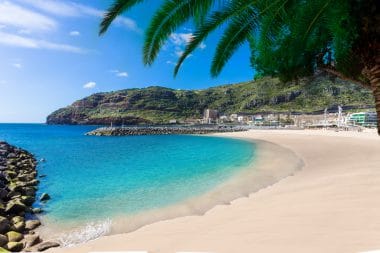
In July 1419, Portuguese explorers landed on the island of Madeira for the first time, and started the settlement of the island from here. This was the beginning of the history of the island as part of Portugal. Machico quickly developed into the center of sugar cane cultivation. The Capela dos Milagres church, built in the 15th century, is not only worth a visit, but also the oldest church on the island. Just like in the chapel of São Roque, the famous Portuguese tile paintings can be admired there. The Solar do Ribeirinho, a former mansion built in colonial style, houses a museum on local history. Near the quay of Machico, the Fort São João Baptista, built in the 18th century, rises above the city. Tourists are also attracted by a Caribbean-looking sandy beach, which was artificially created in the middle of the city center. This sandy beach is an absolute speciality in Madeira, where there are otherwise only stone beaches.


